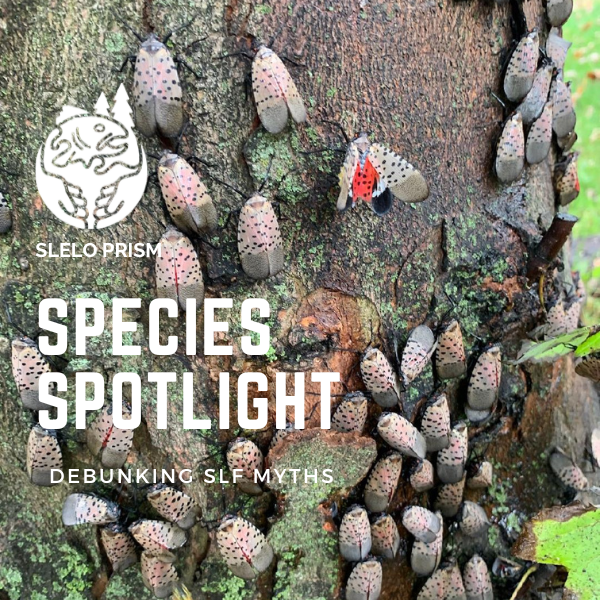This article was featured in the 2024 Winter Newsletter by, Brian Eshenaur– Cornell University Integrated Pest Management Program.
If you visited an area of the northeast that has an infestation of the invasive spotted lanternfly (SLF) you could imagine that the shear abundance of these large insects might sparked some concerns and misconceptions. As this invasive species continues to expand its range, it’s crucial to separate fact from fiction. Here, we debunk some common myths surrounding the spotted lanternfly and shed light on the truth behind this formidable pest.
Myth 1: There’s nothing an individual can do to help protect this region from SLF.
Truth: Right now, reporting any sighting is key! Observations should be sent to ReportsSLF.com where they are reviewed by the NYS Division of Agriculture and Markets and if the insect is reported in an area not known to have spotted lanternfly inspectors will follow-up and appropriate actions will be taken. Familiarize yourself with SLF appearance throughout the year so you can submit a report if you see one.
Myth 2: SLF pose a threat to people and pets.
Truth: Fortunately, spotted lanternflies do not bite or sting, and they can only survive indoors for about 48 hours. Dogs and cats have been known to eat the occasional spotted lanternfly but although the partially chewed insects may be a physical irritant that could cause an upset stomach, there is no known toxin that has been shown to harm mammals.
Myth 3: SLF cannot survive in the colder climates of Upstate NY.
Truth: Unfortunately, this insect overwinters in egg masses that can easily survive subzero temperatures so, our low winter temperatures won’t kill them. However, they do require a rather long growing season to reach maturity and then lay their eggs, so we do not expect them to be able to complete their life cycle in regions with higher elevations in the North Country or Adirondacks. Lower areas particularly where temperatures are moderated near water bodies, such as Lake Ontario, or the St. Lawrence River, may be suitable for the spotted lanternfly to develop and reproduce.
Myth 4: SLF cause significant harm to all our landscape and woodland trees.
Truth: Most trees are unaffected by spotted lanternfly feeding and they cannot feed on any conifer (pine, spruce, or fir). Among the broadleaf trees, spotted lanternflies have their favorites, which include maple, willow, and tree of heaven (TOH) (Ailanthus altissima); of these, TOH, which itself is an invasive species, is the only tree suffering from significant feeding damage. Research is still underway to determine if there will be a loss in sap/syrup production from sugar maples infested with spotted lanternflies. Looking at non-tree species, grapevines can be killed by spotted lanternfly feeding so vineyard managers are watching closely, and will treat infestations as needed to protect their grapevines.
Myth 5: SLF can spread great distances on their own.
Truth: They are clumsy fliers and through a series of climbing trees and launching off, they can travel only a few miles. Most of the spread in the eastern U.S. seems to be due to the insects or their egg masses moving on our vehicles or train cars. So, if you travel to an area affected by spotted lanternfly please be sure to inspect your vehicle or cargo to prevent this hitchhiker from sharing a ride.
Please fill out the form below to be added to our listserv and receive our seasonal newsletter, event invitations and other announcements.


